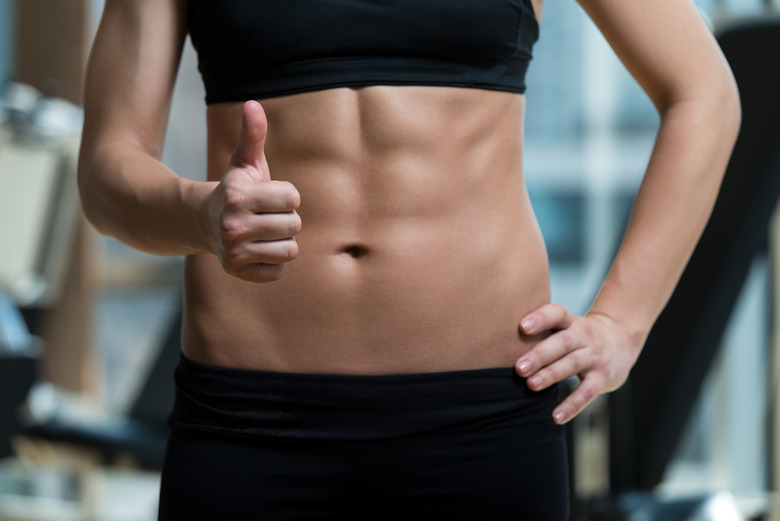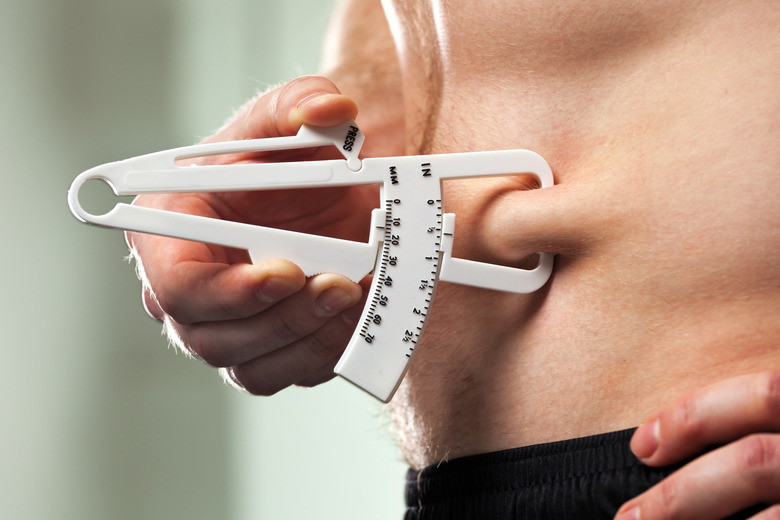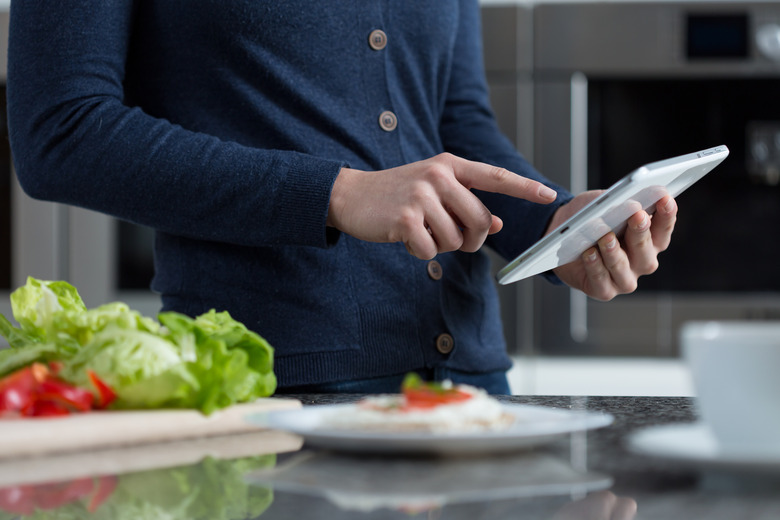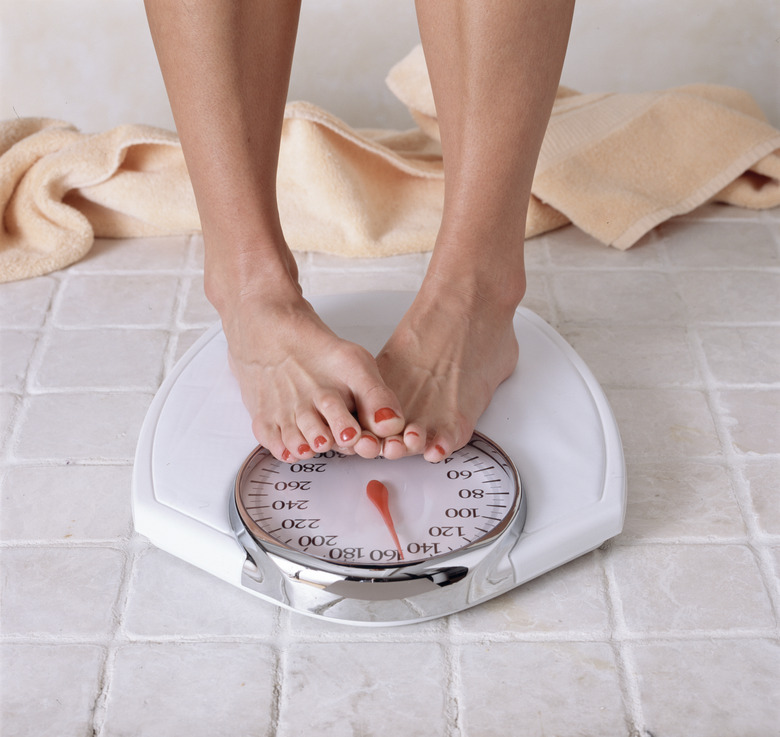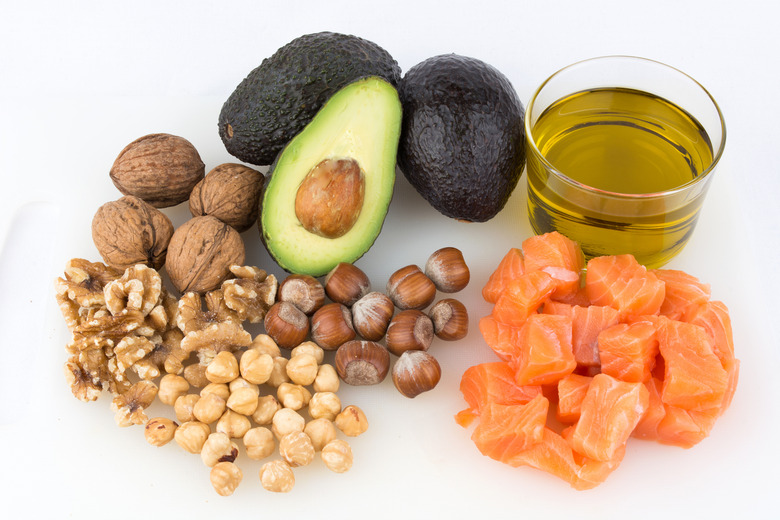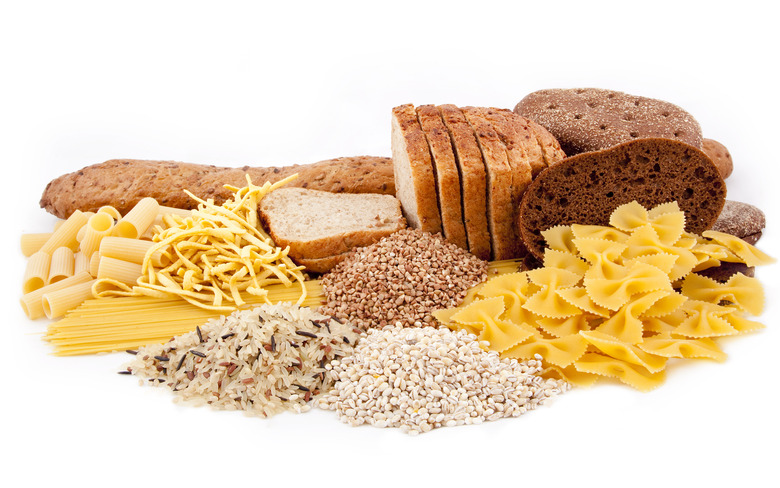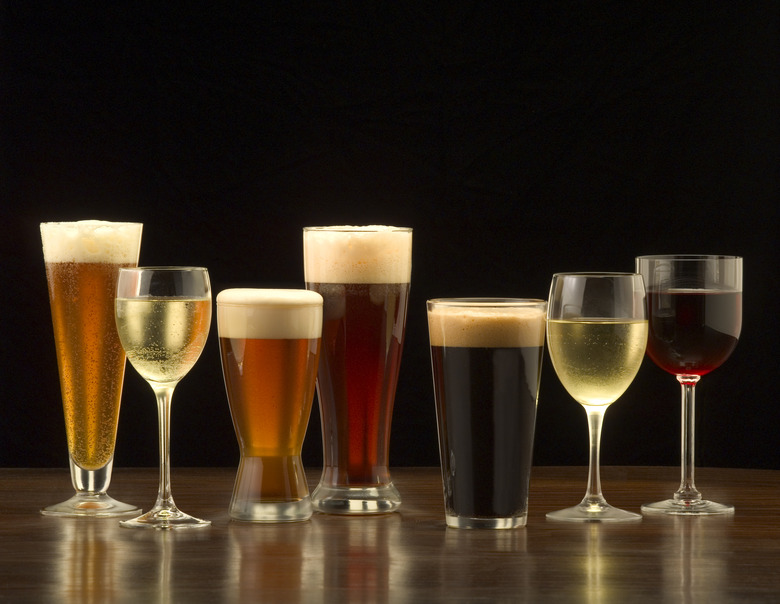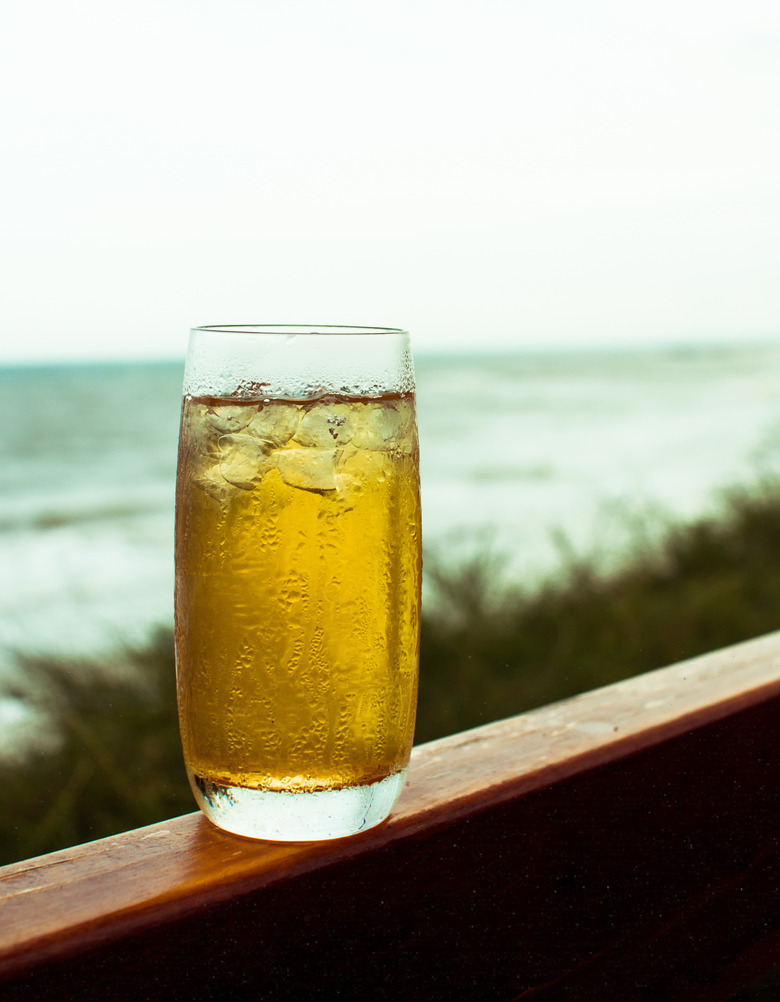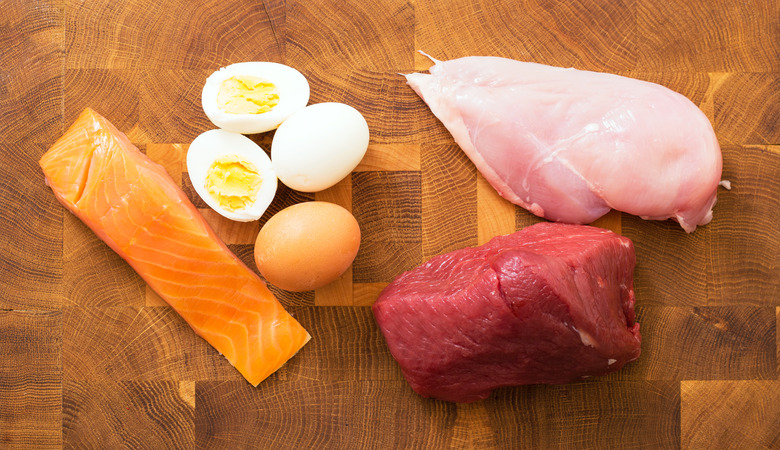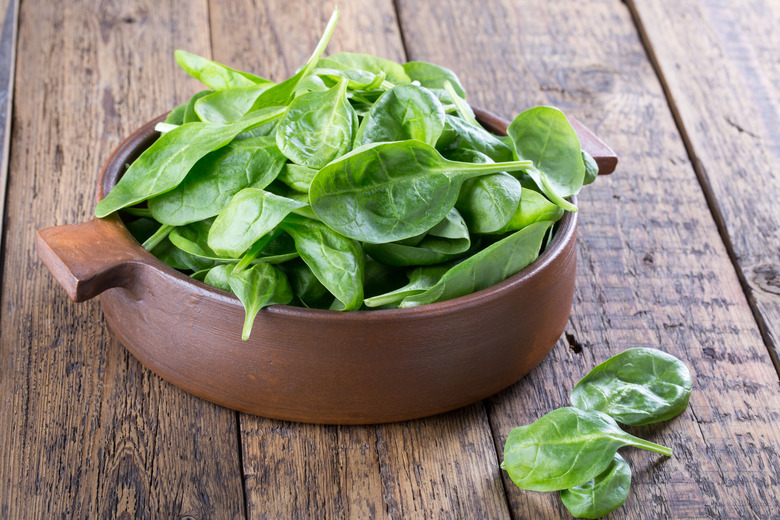Here's How To Eat — Not Exercise — Your Way To Washboard Abs
In the land of yoyo-style weight-loss, it's pretty easy to shed a few pounds quickly. That's the whole point of our guide to losing 10 pounds in 10 days — follow it strictly and you'll be sure to drop some weight (mostly water weight) in no time. What's the issue with losing weight quickly? It's not a lasting, long-term approach to getting fit, and as soon as you hop off of the healthy eating train you'll abruptly return to your old weight. Bummer, right?
Ridiculous fad diets and get-fit-fast methods serve some sort of purpose for those interested in a quick flushing of excess weight, but the path to true, sustainable weight-loss is a long and trying process. In order to avoid the bummers, you'll want to take the long, foolproof path to exposing your abdominal muscles. We'll show you how, over time, you can eat your way to a shirt-off-at-the-tailgate-worthy set of abs.
Assess Your Body Fat Percentage
When trying to get admirable abs, body fat plays a key role. In a country where obesity has become an overwhelming issue, it would behoove any American to figure out his or her body fat level. You can calculate your body fat percentage in a variety of ways, but the most accessible way is to have it measured using skin calipers. More accurate ways to figure it out are a little more complicated (and costly) and include hydrostatic weighing (think getting dunked in a tank of water and comparing your in-water weight to your out-of-water weight), dual-energy x-ray absorptiometry, and air-displacement plethysmography (similar to hydrostatic weighing, replacing water with air).
Basal Metabolic Rate
Basal metabolic rate (BMR) is the base amount of calories you need to sustain energy. If you're sedentary, this number is much lower than it would be if you work using your body for eight hours five days a week, exercising in your spare time. Find a BMR calculator that uses your sex, age, height, weight, and body fat percentage in order to see the base amount of calories you need to survive. Keep this number in mind for assessing caloric deficits.
Body Fat Ranges for Abs
Once you see what your body fat percentage is, you can then assess how long it's going to take you to get abs. For most men, a body fat percentage of 10 to 12 will allow you to show off the outlines of a four pack. If you really want to be chiseled (think more cut than Zac Efron in Neighbors 2: Sorority Rising), you'll want to work down to the six to seven percent range.
Women have a natural tendency to carry more body fat than men (women need to have anywhere from eight to 10 percent body fat to survive, whereas a man's body can get by with a mere two percent). With this being said, a man's lean six- to seven-percent build is comparable to 15 to 17 percent on a woman's frame. If a woman doesn't want crazily ripped abs, getting between 22 or 20 percent will still allow her muscles to show quite well.
Caloric Deficits and How to Safely Use Them
Now that you know your body fat percentage and have identified where you'd like to be, it's time to figure out how many calories you need to eat every day in order to safely achieve your goal. If you have a lot of weight to lose, initially it won't be surprising to see pounds fly off of the scale. The closer you get to your goal, the harder it will be to lose weight. Thus, losing one or two pounds per week will allow you to safely lose about one percent of body fat per month. If you have an abs-out event coming up or you just want to look amazing for your wedding, we'd like to reiterate that there is no safe way to vaporize six body fat percentage points in a month.
In order to do lose a pound or two per week, you'll want to look back at your BMR. One pound of fat is equal to 3,500 calories. Thus, cutting this amount of calories from your weekly calorie total (as seen by multiplying your BMR by seven) or simply subtracting 500 calories daily from your BMR-prescribed calorie intake can help you safely expose your abdominal muscles over time. An easy way to expedite this process with less math is to enter your ideal weight and body fat percentage into the BMR calculator — by doing this, you'll procure the ideal number of calories you need in order to make this happen. If you're not seeing results after a few weeks, try lowering your daily calories by 100, reassessing each two or three weeks.
Defining Priorities
If you simply must have those abs ready to go for your family's trip to one of the best beaches in America, you need to dedicate every inch of your being to sticking to your calculated calorie intake. While food choices can play a large role in the way your body appears, the most important thing is hitting your caloric deficit day in and day out. If you don't need jaw-dropping abs, but still want to have an impressive midsection, you have a little more wiggle room. The more intense your transformative goals, the more dietary dedication and prioritization you'll need to commit to. If it were easy, everyone would be doing it. We have 25 strategies to help you stick to your fitness goals that you should consider looking to in order to keep yourself on track.
Fats Don’t Make You Fat
One gram of fat accounts for nine calories. Between protein, carbs, and alcohol (four, four, and seven calories per gram, respectively), fat is certainly the most calorically dense macronutrient available for human consumption. A list of the healthiest fats includes avocado, walnuts, almonds, grass-fed butter, coconut oil, salmon, and fat from animal meat. A diet rich in these healthy fats will provide your body with easily usable calories, satiety, and energy.
For the Love of Carbs
Sorry, folks, but while trying to eat your way to abs, carbs are enemy number one. Your mission-critical macronutrients will be healthy fats and protein, and most carbohydrates should be used sparingly. If you simply must have carbohydrates, consider reading up on the proper employment of cheat meals. You'll be able to consume many more carbohydrates if you pair your weight-loss plan with exercise, ideally timing your carb intake around workouts. If you want examples of the healthiest carbs to eat while exercising your way to abs, check out our 14 Complex Carbs to Help Shape Your Best Summer Body Yet.
Goodbye, Dear Alcohol
While many swear that drinking a glass of red wine is as healthy as an hour at the gym, any man or woman looking to get down to an ab-normally amazing body fat range of six to seven or 15 to 17 percent should steer clear of all forms of alcohol at all times. If you're not looking to be a lean, mean, stomach-baring machine 24/7, then learning about the pros and cons of alcohol consumption is your best move. Sneaking a drink or two into your weekends certainly won't kill you, and it may prove beneficial when faced with the daunting process of socializing while getting your body in tiptop shape.
Hello, Healthy Teas
Many caffeine-containing drinks can not only boost your metabolism but also promote the feeling of fullness. If you've had one too many espressos lately, consider trying one of our 26 Morning Pick-Me-Ups That Aren't Coffee in order to stave off hunger pangs and keep your furnace-like digestive system burning brightly.
More Protein Please
Protein is singlehandedly the most important macronutrient your body needs while in an ab-forming caloric deficit. There are a few schools of thought regarding protein's role in daily macronutrient ratios, but we're going to hedge our bets on a relatively modest intake of one to 1.5 grams of protein per pound of bodyweight. It's very, very hard to overdose on protein, so don't fret too much about losing your abs after eating an extra portion of a healthy grilled chicken breast. Look to the most viable sources of protein during your quest for abdominal excellence, including eggs and egg whites, wild-caught white fish, salmon, and shellfish, chicken breasts, lean cuts of grass-fed, pasture-raised beef and bison, and fat-free dairy items like Greek yogurt and cottage cheese.
Serve Spinach With Everything
The healthiest dark, leafy greens will never, ever (seriously never) detract from your weight-loss goals. You'd be remiss not to include a plethora of spinach, kale, arugula, and other roughage into your diet. Your body is going to be in a depleted state, and any extra dose of micronutrients (read: vitamins and minerals) will help it stay energized and feel sated.
Time Will Tell
You've identified your current and ideal body fat percentage, calculated your BMR, and figured out how many calories you need to consume in order to achieve abdominal prowess. If you are a man starting at 20 percent body fat, you can expect a pretty great set of abs to appear after eight months of relatively strict dieting. While the scale is a great way to keep track of your one or two pounds per week weight-loss goal, the truest measurements of success can be found in the mirror and in your mood. Taking daily, weekly, or monthly progress pictures provides you with visual proof that all of those weeks of saying "no thank you" to booze, bread, and butterscotch ice cream were worth it, and if you're not happy with what you're doing, it's certainly time to reassess your approach to nutrition.
